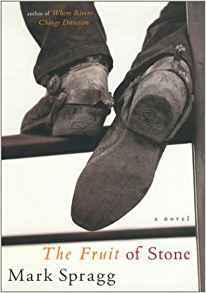
The novel is intensely interested in landscapes and paintings, as you can see.
So much of our experience of a book stems from how we approach it. Whether we expect a satisfying resolution or a dissonant cliffhanger, and how well these expectations are met, can change a mediocre book into an amazing one, because that was the right book for the right time in our lives. It can also do the opposite.
Kate Wilhelm’s 2012 novel Death of an Artist is a strong character-driven crime novel. It’s set in the fictional town of Silver Bay in the state of Oregon, where the author lives. It’s more-or-less set in 2012, with iPods and computers available, although these are so subtle (due to the isolation of the setting) that I went through the first half of the book thinking it was set around 1900. The tone is distinctly American, with casual references made to the urban centres of Newport and Portland, and that apocryphal story about Orson Welles’ War of the World radio broadcast causing mass hysteria.
Wilhelm’s storytelling is strongest when she is writing about art and life in a small coastal town. She places three generations of women in a single household, switches between characters’ perspectives freely, and provides a real sense of what it means to have suffered in life as you learn more about each of these characters. She builds the setting and the tension masterfully. But then it all falters.
Although this book declares itself to be ‘A Mystery’ (see front cover), it is not one. An effort is made to make Stef’s death seem like an accident, but in truth we know from the start who committed the murder. Indeed we know before the start, because the inside cover of the dust jacket tells us. I suppose it’s a testament to the strength of Wilhelm’s character development and her convincing portrayal of the murderer’s self-justification that I was still looking for an alternative explanation, something to tie up all the loose ends, right up until the last page. As it is, the loose ends remain. Could the injuries really have been hidden so easily? Would he really have killed for so little money? Are we to brush over the detective’s mental instability?
If you go into this novel thinking of it purely as an American character study, or alternatively if you rip out the last 40 pages, I feel you will have a better time than I did. But Wilhelm deserves to be commended for this wonderful piece of work nonetheless.
Rating: 4/5.
Advertisements Share this:




